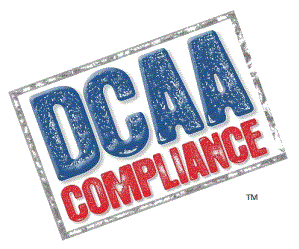July 1, 2103
Over the last several years I continue to spend hours discussing the shortcomings and design flaws surrounding DCAA’s recent versions of the ‘model’ ICE (Incurred Cost Electronically)
My favorite complaint is DCAA’s decision to publish their latest two versions in June which, by remarkable coincidence, is only a couple of days before the majority of submissions are due across the country. This was followed up last year by one supervisor’s insistence the new Schedule J be utilized on a submission turned in before the new schedule was even published. This is funnier when I recall that he called the new Supplemental Schedule B by it old name the Schedule T.
The Schedule I bothers me for one serious design dating back to the introduction of the schedule from about a dozen years ago. FAR52.216-7(d) (2) (iii) (I) – Allowable Cost and Payment is pretty clear:
(I) Schedule of cumulative direct and indirect costs claimed and billed by contract and subcontract.
DCAA’s model Schedule I links back to the total costs on the Schedule H and the new document published by DCAA for determining the adequacy of a proposal includes this as a requirement. This now defines the “Current Year Cost FYE” on the schedule I as the total contract costs on the Schedule H.
The Schedule I now takes this figure and the figure from the previous year’s Schedule I to reach a cumulative cost amount. This is then reconciled to the contract “Cumulative Billed” through the last voucher of the year. The final result is an amount that the contractor has overbilled or underbilled.
Yeah, right.
If these are CPFF contracts the billing includes fees while the Schedule H does not. This would mean that there is a reasonable chance that the Schedule I will always show overbilling by the amount of the Fee (Schedule H costs of $100 compared to billing $100 + $7 in fee shows up as an overbilling of $7).
Of course this assumes that the contractor neatly bills everything in a final voucher for the year. In other words, they bill all of the costs for December 1 to December 31 and not December 21 – January 7. There is no FAR requirement for tidy billing and with the introduction of intra-month billing several years ago it does not even make business sense.
I have heard all sort of amusing rationalizations from DCAA, contractors, and even consultants on this issue over the years.
- One auditor argued that I could not link the model schedule I to the FAR paragraph I in the regulation.
- The most common argument is that Billing does not include Fee and the contractor should remove the Fee from the Schedule I (thank God no one has asked me to remove it from the public voucher)
Most contractors and DCAA auditors solve the problem by adding a Fee column to the Schedule I and for years I did this. I stopped doing this several years ago for one simple reason: DCAA kept coming out with new versions of the ICE with this same problem (and new ones). Are the designers even talking to the auditors in the field?
I am always looking for a sign that the DCAA crisis which began in 2008 peaked and we are finally moving forward. Fixing the Schedule I would be such a sign if for no other reason that it would indicate the DCAA bosses in Washington are listening to the people on the front lines.
Fix it, I won’t.
